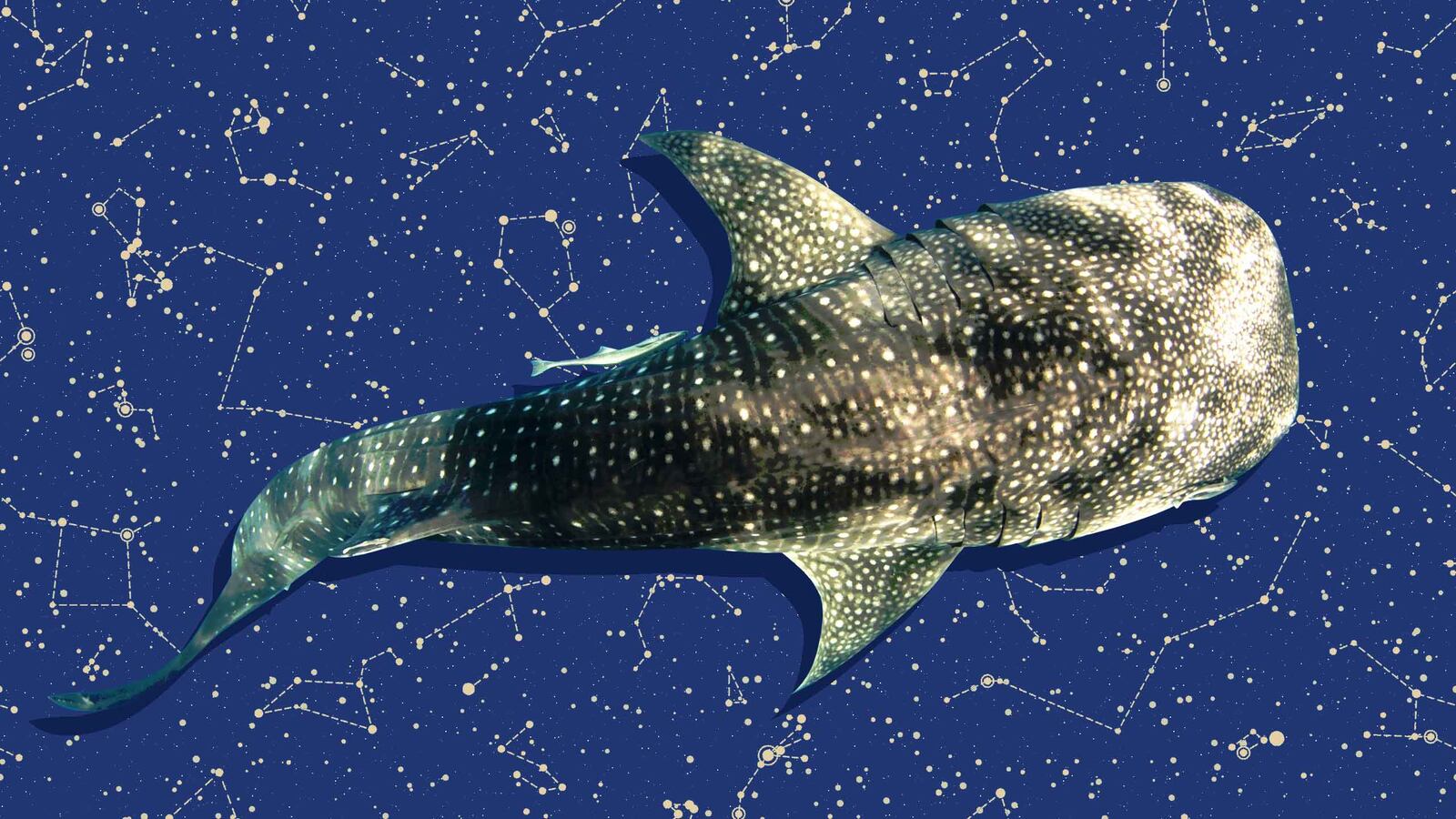Like too many other species, the world’s largest fish is in trouble.
Despite being listed as an endangered species by the International Union for Conservation of Nature (IUCN), whale sharks are threatened by overfishing and human-caused damage to the ocean environment.
What makes the race against extinction even harder is the fact that scientists don’t have a precise idea of how many whale sharks are actually out there.
That may seem odd, because adult whale sharks can reach 10 meters (33 feet) in length, making them roughly the size of a school bus. However, they live much of their lives in open water; very few scientists had even seen one before the 1980s. Even with technological improvements over the last 30 years, it’s a difficult species to study, thanks to their lifestyle.
To get some idea about their numbers, researchers need to tell them apart. Each whale shark, has a unique pattern of lines and spots behind its gills, a sort of shark fingerprint.
So researchers turned to citizen scientists and looked to the stars, adapting a piece of computer code originally developed to identify star patterns in astronomical images.
The astronomical algorithm—developed by E. J. Groth in the 1980s and later used on data from the Hubble Space Telescope—is designed to recognize what part of the sky is contained in an image by comparing the pattern of stars to standard star charts. The original procedure picks out all the possible triangles of stars in a region of the chart, and matches those triangles to the same arrangements of stars in new astronomical photographs.
Shark researchers adapted the Groth algorithm to identify whale sharks by their spots, which form their own sorts of constellations. They had to adjust some things, since photos taken of the animals aren’t all from the same angle. Similarly, the patterns of spots become more regular farther back on the body, so shark scientists don’t construct all possible triangles. They also have to account for photographic artifacts, like false spots created by sunlight dappling on the side of a whale shark—a pretty effect, but one that confuses matters for identification. With these adjustments, the Groth algorithm has proven very reliable in automatically telling one whale shark from another.
“We took something from a totally different field of science—astronomy—and applied it to biology, to a very effective outcome,” says Al Dove of the Georgia Aquarium, which incidentally is the only aquarium outside Asia to have whale sharks on display.
“The best part is the democratizing of science, the fact that all these scientists are able to work together,” he added. The published study involved 38 scientists, not counting a number of citizen scientists: everyday, normal people who provided whale shark photographs from various sites around the world.
“A lot of the submissions still come from researchers, but the citizen scientists play a really important role in filling in a lot of the gaps between places and times when researchers don’t organize trips to the field,” Dove said.
All the information from researchers, both professional and amateur, is combined into an online database called Wildbook for Whale Sharks. When a person contributes to the database, they receive updates about other sightings of “their” shark, so they can keep up with where it’s been, where it goes, and how it’s doing. (The whale sharks themselves don’t participate in Wildbook, though, because their internet connection is too… spotty.)
The Wildbook contains nearly 30,000 whale shark sightings over 54 nations, out of which the algorithm has identified over 6,000 individual sharks.
Whale sharks feed on plankton and other tiny ocean animals, unlike great white sharks, tiger sharks, and their other toothy cousins. They feed by opening their huge mouths like a jet intake, filtering their food out while expelling water and things they don’t want to eat. Like many true whales (which are mammals), whale sharks are relatively unbothered by humans, letting divers get close. (While divers should not harass wildlife, whale sharks are gentle giants compared to more bitey shark species.)
But there’s still a lot researchers don’t know about how they reproduce and where they spend most of their time. That’s where the new research comes in: Researchers have identified several major whale shark congregation sites within the last decade—including one first published in 2016—thanks to the Wildbook spot-identification census. These sites are places where the sharks’ food is plentiful and reliable, and often happen to be good for underwater photography.
Researchers also found the large whale shark gatherings were more than two-thirds male, and that many individuals returned to the same congregation spots multiple times. Why these spots are whale shark sausage fests and whether female sharks hang out elsewhere are open questions.
Dove is puzzled by another find. Much of his research work involves tagging whale sharks with radio transmitters and tracking their movements, which is complementary to the Wildbook photographic identification project. But the satellite and photo work don’t show the same behaviors.
“Animals we satellite tag in Yucatán, Mexico, predominantly go into the Gulf of Mexico after they leave the Yucatán site,” Dove said. “But the amount of photo ID overlap between Yucatán, Mexico, and the Gulf of Mexico site is very low.”
In other words, the individually tracked whale sharks move around from site to site, but the Wildbook results show most whale sharks sticking to one congregation site.
That’s just another sign of how much we still have to learn about the world’s biggest fish. Because whale sharks are large and live long lives (some specimens live past 100 years), their populations and behaviors are signs of overall ocean health. That they’re charismatic—biologist-speak for “cute”—helps get the message out, too.
In the end, a little help from the stars and ordinary people might save the whale shark from humanity’s mistakes.






